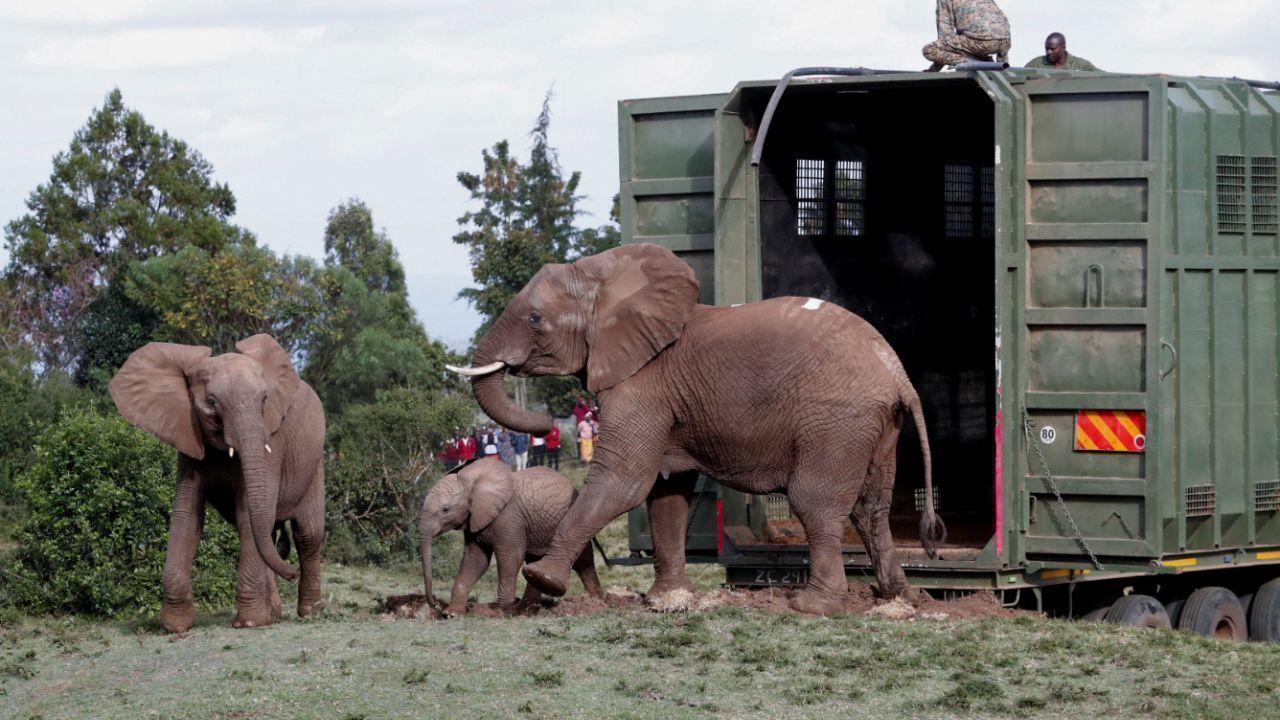
Post by : Priya
Photo:Reuters
In a time when environmental news is often filled with worry—melting glaciers, dying coral reefs, vanishing forests—Kenya has given the world a reason to smile. For the first time in decades, the country’s elephant population is not only stable but growing. Conservationists, government agencies, and local communities are celebrating what is being called a “remarkable recovery” in the number of elephants roaming Kenya’s protected lands.
A Grim Past: The Fall of the Giants
In the 1970s and 1980s, Africa's elephants faced a silent war. Driven by global demand for ivory, poachers slaughtered elephants in large numbers. Kenya was one of the worst-hit countries. In 1973, Kenya had more than 160,000 elephants. By 1989, this number had fallen to around 16,000. Vast herds were destroyed, elephant families torn apart, and the country's reputation as a safari paradise was deeply damaged.
In 1989, the late President Daniel arap Moi made headlines by publicly burning 12 tonnes of ivory in Nairobi National Park. It was a bold message to the world that Kenya was serious about saving its elephants. That moment marked the beginning of a long and difficult journey towards recovery.
Turning the Tide: What Worked
Kenya's current success didn’t happen overnight. It is the result of decades of consistent work, strong political will, community involvement, and international support. Let’s explore the major factors behind this success.
1. Strong Laws and Serious Punishment
Kenya made poaching a high-risk crime. Under the Wildlife Conservation and Management Act passed in 2013, poachers can face up to life in prison or pay fines of more than $200,000. This tough law has discouraged many would-be poachers and sent a clear message that wildlife crimes will not be tolerated.
2. Empowered Rangers and Better Equipment
Wildlife rangers, who are the first line of defense for elephants, were given better training and tools. Many are now equipped with GPS tracking devices, night-vision goggles, and even drones to monitor large areas. The Kenya Wildlife Service (KWS) has played a central role in improving security in parks like Amboseli, Tsavo, and Samburu.
3. Community Involvement
No conservation effort can succeed without local support. Kenya has built strong relationships with communities living near wildlife zones. Through programs that share tourism revenue and provide jobs in conservation, people have become partners in protecting elephants. Many locals now work as rangers, guides, or community scouts.
The Maa Trust in the Maasai Mara and Northern Rangelands Trust in Laikipia are two examples where community-managed conservancies have shown outstanding results. Elephants, once seen as dangerous crop destroyers, are now viewed as valuable assets by the communities.
4. Conservation Technology
Kenya is using modern technology to protect its elephants. GPS collars help track elephant movements and predict possible human-wildlife conflicts. When elephants come close to villages or farms, early warnings are sent out, helping both people and animals stay safe.
Artificial intelligence is used in analyzing poaching patterns, and drones fly over large areas where rangers cannot easily reach. This mix of old-school patrolling and new-age technology is proving effective.
5. Support from the Global Community
International organizations such as Save the Elephants, the World Wildlife Fund (WWF), and the African Wildlife Foundation have partnered with the Kenyan government. These groups provide funds, training, research, and advocacy to help protect Kenya’s elephants.
Tourists from around the world also play a role. Wildlife tourism brings in over $1 billion each year, creating an economic reason to preserve wildlife habitats and the animals within them.
The Numbers Tell the Story
Today, Kenya’s elephant population stands at more than 36,000, according to the Kenya Wildlife Service. This marks a more than 30% increase over the past decade, and double the number from the late 1980s.
Some areas have shown especially promising signs. In Amboseli National Park, researchers from the Amboseli Elephant Trust report healthy birth rates, stable family groups, and fewer poaching deaths. The birth of over 200 elephant calves in 2023 alone was considered a record.
Why This Matters
Elephants are more than just large animals with trunks and tusks. They play a critical role in the ecosystems they inhabit. As “ecosystem engineers,” elephants help maintain the balance of their habitats. They open up forests, spread seeds through their dung, and create water holes used by other animals.
From a cultural perspective, elephants hold deep meaning for many African communities. From Maasai traditions to national symbols, elephants are a source of pride and identity.
Globally, Kenya’s success sends a powerful message: it is possible to reverse wildlife loss with political will, community effort, and consistent policies. As other nations look for models to protect their endangered species, Kenya’s elephant story stands out as a beacon of hope.










NBA Friday Recap: Powerhouse Wins for Miami, LA, Milwaukee, and Clippers
Miami, LA Lakers, Milwaukee, and Clippers triumphed in a thrilling NBA Friday, showcasing standout p

Doncic Shines with 49 Points in Lakers' 128-110 Victory over Timberwolves
Luka Doncic dazzles with 49 points as the Lakers secure a 128-110 win against the Timberwolves, show

Kings Triumph Over Jazz 105-104 with Last-Minute Sabonis Effort
The Sacramento Kings edged out the Utah Jazz 105-104, with Domantas Sabonis making the decisive shot

Argentina's Friendly Match Against India Delayed, New Date to be Announced
The friendly match between Argentina and India in Kochi has been postponed due to FIFA approval dela

Rohit and Kohli Conclude ODI Journeys in Australia with a Victory
Rohit Sharma and Virat Kohli bid adieu to Australian ODIs with a final win, forming a 168-run partne

George Russell's Wrestling Mask Antics at Mexican Grand Prix
George Russell donned a wrestling mask to enjoy the Mexican Grand Prix from the stands, providing a